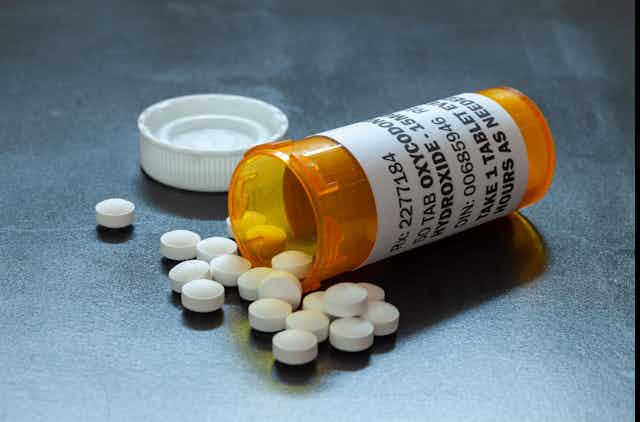Sean Jennings started taking opioids in 1993 following a complication from a hernia operation that left him in debilitating pain. His GP initially prescribed codeine combined with paracetamol, but the pain persisted. Every day Sean took more and more pills. His GP eventually prescribed stronger opioids than codeine – tramadol, at first, and then morphine. Twenty-five years on, Sean was taking 160mg of morphine every day – a very high dose – but he was still in pain. He was also at high risk of overdosing.
To find out how many people there are like Sean, we conducted a study, synthesising all the published research on high-dose opioids. We found that of 4.2 million people taking prescription opioids in Australia, the UK and the US, over 154,000 were taking high doses. We also found five factors linked to the use of high-dose opioids: being prescribed benzodiazepines (such as Valium), increased visits to emergency departments, depression, unemployment and being male.
Of these factors, the combined use of high-dose opioids with benzodiazepines is the most worrying. Benzodiazepines, also called “benzos”, are sedative drugs that are prescribed for anxiety and poor sleep - common in people with chronic pain. But people taking high-dose opioids plus a benzodiazepine have a tenfold greater risk of unintended overdose than people taking opioids alone.
Gradual process
High doses of opioids aren’t used at the start of treatment. The escalation in dose is usually a gradual process, occurring over many years. While high doses are necessary for people receiving palliative care and cancer treatment, no clinical trials of the benefits and harms of using opioids in high doses for chronic pain have been conducted. Despite this, prescriptions of high-dose opioids have increased in Australia, Canada, England and the US.
Reducing the amount of high-dose opioid prescriptions can benefit stretched healthcare budgets and systems. In England, if GPs reduced the number of high-dose opioid prescriptions, £24.8 million could be saved in six months. And visits to the emergency department would be reduced too.
But there is a critical gap in our understanding of this problem as most studies were from the US, with one from Australia and one from the UK. This is because access to electronic patient records is very limited globally, and not much research has evaluated the prescribing of high-dose opioids. Data on the number of prescriptions is more readily available, but to understand what dose people are prescribed, we need patient-level data.
Through self-management with exercise, mindfulness and group therapy, Sean has been opioid-free for two years and is “thriving”, although he is still in pain. He is living proof that life without high-dose opioids is possible. Sean says that social prescribing, where GPs refer patients to a local community group or social activity, such as art classes, in addition to standard clinical care, is the way forward.
We must rethink the prescribing of high-dose opioids for people with chronic pain. There are many unanswered questions, but turning to the prescription pad will not solve the problem. Lower doses of opioids are safer, will benefit strained healthcare budgets and reduce the burden on healthcare systems globally. Sean is proof that there is another way.

